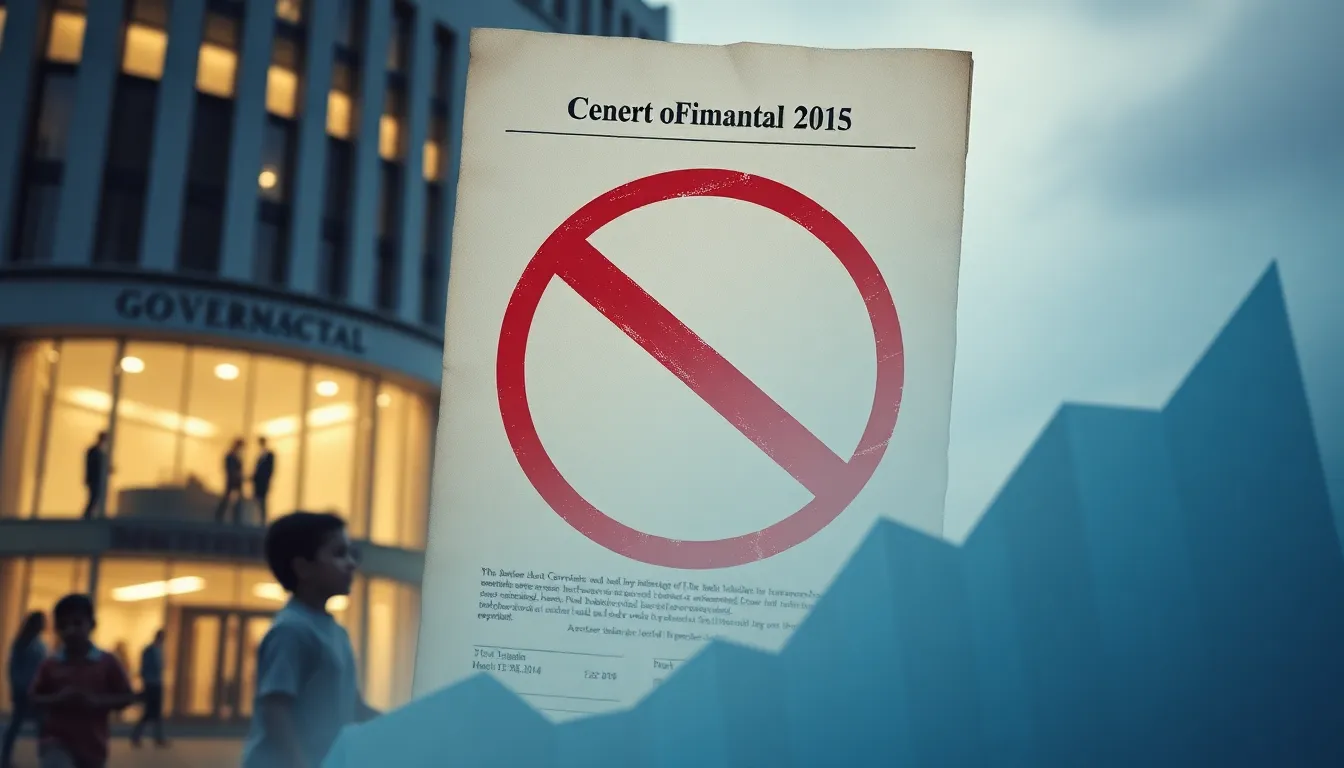As exorbitant child care costs place immense pressure on American families, a critical question emerges: Will America finally treat child care as a public good? Some states are about to find out, implementing pioneering reforms that redefine accessibility. New Mexico’s universal program and New York City’s proposed plans exemplify these efforts, aiming to provide substantial financial relief and reverse a national birth rate decline linked to soaring expenses.
Key Implications
- State-Led Child Care Transformation: Pioneering state and city initiatives, such as New Mexico’s universal free child care and New York City’s proposed Pre-K/3-K, are delivering significant financial relief to families, actively redefining child care as a public good supported by political momentum.
- Addressing Socio-Economic and Demographic Challenges: The high cost of child care is a primary driver of America’s declining birth rate since 2007, presenting profound long-term economic impacts on future workforce availability and social safety nets, which these reforms aim to mitigate.
- Overcoming Historical Federal Gaps and Private Sector Incentives: Decades of federal policy failures have fostered a profitable private child care sector, creating disincentives for universal public programs and presenting a challenge for systemic reform.

State Initiatives Deliver $26,000 Annual Savings for Families
Several states are pioneering or proposing significant child care reforms, directly addressing the substantial financial burden on families. These efforts pose a fundamental question: Will America finally treat child care as a public good? Some states are about to find out. With New Mexico set to offer free care for children aged 6 weeks and New York City facing average annual costs of $26,000, the push for accessible and affordable child care is gaining unprecedented momentum, promising direct financial relief.
New Mexico’s Groundbreaking Universal Child Care Model
New Mexico is leading the nation by becoming the first state to offer free daycare to all children from 6 weeks old. This ambitious program is primarily funded by dedicated oil and gas development fees, ensuring a sustainable mechanism for its extensive reach. The initiative aims to alleviate the immense financial pressure on families throughout the state, making early childhood education universally accessible.
The political landscape reflects the success and public support for these reforms. New Mexico’s Governor secured re-election after implementing the first phase of expanded early childhood education. This outcome underscores the significant political momentum associated with initiatives that prioritize affordable child care, demonstrating a clear mandate from voters for such public investments.
The direct financial relief provided by New Mexico’s program is substantial. For comparison, daycare for one infant in Utah, often considered a family-friendly state, typically costs around $11,000 annually. By eliminating these costs entirely for eligible families, New Mexico sets a powerful precedent, transforming the economic realities for thousands of households. Concerns from universal child care providers are being addressed as the state navigates this new landscape.
Addressing the Child Care Crisis in Major Metropolitan Areas
The financial strain of child care is particularly acute in major urban centers. New York City, for instance, faces staggering average annual daycare costs of $26,000. This exorbitant expense places an enormous burden on working families, often forcing parents, especially mothers, out of the workforce or into precarious financial situations.
In response to this crisis, New York City mayoral candidate Andrew Cuomo has pledged to implement universal, full-day Pre-K and 3-K for all three- and four-year-olds. These proposed plans aim to significantly reduce or eliminate child care costs for many city residents. Such initiatives explore whether America will finally treat child care as a public good, particularly within high-cost metropolitan environments where the need is most pressing.
The successful implementation of programs like those proposed in New York City would translate into profound direct financial relief. An NYC family could see an annual saving of up to $26,000, mirroring the average daycare cost. These savings could dramatically improve household budgets, allowing families to allocate funds to other essential needs. Providers’ concerns about rule changes are part of ongoing discussions to ensure these programs are sustainable and beneficial for all.
The Broader Socio-Economic Impact and Political Outlook
These state and city-level initiatives signify a pivotal shift in how child care is perceived. They move beyond the traditional view of child care as solely a private family expense, positioning it instead as essential public infrastructure. The direct financial relief offered by these programs is a powerful catalyst for change, benefiting not only individual families but also the broader economy by supporting workforce participation.
The political outcomes, such as the New Mexico Governor’s re-election, clearly demonstrate a strong public appetite for accessible and affordable child care. This success story provides a compelling case study for other states and municipalities considering similar reforms. The question of will America finally treat child care as a public good? Some states are about to find out is being answered through these pioneering efforts, showing tangible results and broad public support.
By investing in universal or highly subsidized programs, states and cities are actively supporting family well-being and economic stability. This proactive approach ensures children receive crucial early childhood education, laying a foundation for future success. A comprehensive child care access bill for student parents, for example, further illustrates the multi-faceted approach to addressing child care needs.

Child Care Costs Lead to National Birth Rate Decline Since 2007
The financial strain of raising children in America has reached unprecedented levels. Child care costs nationwide have “never been higher,” creating a significant barrier for families considering parenthood or expanding their existing households. This escalating burden directly influences family size decisions across America, marking a crucial factor in the nation’s consistent birthrate decline observed since 2007.
This trend highlights a stark reality: for many Americans, the ideal family size is becoming financially unattainable. The direct correlation between the financial burden of child care and decisions regarding family planning is increasingly evident. Families often grapple with how to balance career aspirations with the fundamental desire to have children, or to have more children, when faced with prohibitive expenses.
The Unprecedented Financial Burden on Families
The cost of child care presents a quantifiable obstacle for millions. It forces a challenging calculus for potential parents. They must weigh the joy of raising children against the substantial, often overwhelming, financial commitment required. This situation underscores why addressing child care as a public good has become a pressing national conversation.
A recent New York Times survey powerfully illustrates this individual impact. It identified the cost of child care as the “most common reason” Americans of childbearing age gave for having fewer than their “ideal” number of children (New York Times). This survey finding resonates deeply with the experiences of countless households struggling to manage everyday expenses alongside child care fees that can rival mortgage payments or college tuition.
For student parents, these costs can be particularly daunting, impacting their ability to pursue education and improve their long-term economic prospects. Initiatives aimed at improving child care access for student parents represent one tangible step towards alleviating this specific pressure point. Such programs acknowledge the multi-faceted challenges faced by diverse family structures in today’s economy.
National Birthrate Trends and Economic Implications
America’s declining birthrate has been on a mostly downward track since 2007, directly mirroring the escalation of child care expenses. This isn’t merely a demographic statistic; it carries profound long-term economic and societal implications. A declining birthrate impacts future workforce availability, consumer markets, and the sustainability of social safety nets. This makes the issue far more expansive than individual family choices.
The national scope of this issue demands a comprehensive response. When child care expenses outpace wage growth, families are forced to make difficult sacrifices. These sacrifices can range from delaying parenthood to reducing family size. This economic pressure shapes the very fabric of American society and its future trajectory, forcing a re-evaluation of current systems.
Discussions around universal child care are gaining traction as a potential solution to mitigate these financial pressures. However, implementing such changes also brings its own set of concerns, particularly for existing providers. Many universal child care providers fear finances and overreach from new regulations. This highlights the complexities of systemic reform in a sector historically reliant on private funding and diverse operational models.
The Imperative to Treat Child Care as a Public Good
The evidence unequivocally points to child care as a critical economic and social infrastructure, not merely a private family expense. The pivotal question emerges: Will America finally treat child care as a public good? Some states are about to find out. They are currently exploring innovative policy frameworks and new funding mechanisms.
Reframing child care as a public good implies government investment and support to ensure affordability and accessibility for all families. This approach could alleviate the immense financial pressure on parents. It could also empower individuals to achieve their desired family size, contributing positively to national demographic trends rather than exacerbating their decline.
However, the transition to such a model is not without its challenges. Providers, for instance, express concerns about rule changes aimed at making child care universally accessible. These concerns often center on maintaining quality, ensuring fair compensation for educators, and navigating new regulatory landscapes. Balancing the needs of families with the sustainability of providers is a delicate but essential task for policymakers.
Ultimately, the consistent decline in America’s birthrate since 2007 serves as a powerful indicator. It shows the urgent need for a societal shift in how child care is perceived and supported. Moving towards a model where child care is accessible and affordable could unlock significant human potential. It could also foster a healthier economic and social future for the nation, ensuring that family ideals are not solely dictated by prohibitive costs.

Decades of Federal Policy Failures Fuel Private Sector Child Care Profit
The question of whether America will finally treat child care as a public good remains central to policy discussions, with some states now piloting new approaches. Historically, the nation has grappled with establishing comprehensive federal support for child care, often leading to significant political hurdles. Despite several promising attempts, a consistent pattern of opposition has emerged, ultimately shaping the current landscape of child care provision.
A Legacy of Near Misses: Federal Child Care Initiatives
During World War II, a crucial need for child care arose as women entered the workforce in unprecedented numbers. Congress responded by allocating “millions of dollars” to universal child care programs. These initiatives provided vital support, recognizing child care as an essential component of national productivity and family well-being during a time of crisis.
Decades later, in 1971, another landmark effort, the Comprehensive Child Development Act, gained substantial bipartisan support. This legislation passed both houses of Congress, signifying a broad recognition of the need for federal intervention in child care. It proposed a national network of affordable, high-quality child care services.
However, this act faced significant conservative backlash, culminating in a veto by President Nixon. The opposition was palpable and organized, with President Nixon reportedly receiving “100,000 letters” from conservative parent groups against the bill. This formidable opposition derailed what could have been a foundational shift towards treating child care as a public good.
The veto of the 1971 Act marked a critical turning point. It solidified a trajectory where federal universal child care remained an unfulfilled promise. The repeated failure to enact national child care policies left a significant void in a crucial sector, impacting families nationwide.
The Private Sector Fills the Void: A Profitable Landscape
The consistent absence of comprehensive public child care programs created a vast market opportunity for private enterprise. This unmet demand has proven particularly attractive to investors, transforming child care into a profitable industry. In the “last decade,” Private Equity firms have invested heavily in child care chains, signaling a clear shift towards a market-driven model.
These investments highlight the financial viability of private child care, often at the expense of accessibility and affordability for many families. Private equity firms focus on generating returns, which can sometimes diverge from the broader social goals of universal, high-quality child care. This commercialization raises questions about the long-term implications for the sector.
Bright Horizons, a prominent private daycare provider, exemplifies this profitable trend. A Goldman Sachs analyst stated in 2022 that Bright Horizons was “profitable and throwing off cash.” This observation underscores the financial success achievable within the private child care market. The demand for child care services remains high, regardless of federal support, creating a robust profit environment.
The company’s own annual report further elucidates this dynamic. It explicitly states that “Government universal child care benefit programs could reduce the demand for our services … and adversely affect revenues.” This statement directly illustrates the financial disincentive for private, profit-driven entities to support universal public child care initiatives. For companies like Bright Horizons, expanded public programs represent a direct threat to their business model.
The stark reality is that decades of federal policy failures have inadvertently created and sustained a system where child care is largely a private commodity. This situation often burdens families with exorbitant costs, and it means that quality and access are frequently dictated by market forces rather than public need. As discussions continue about whether America will finally treat child care as a public good, understanding this historical context is vital.
This profit-driven model contrasts sharply with the concept of child care as an essential public service. Consequently, providers have often expressed concerns about rule changes for universal access, fearing government overreach. Similarly, some universal child care providers fear financial overreach from government intervention if such programs were ever widely implemented, despite the potential benefits.
The ongoing debate highlights the tension between market mechanisms and public welfare. While federal efforts have stalled, new initiatives, such as a child care access bill for student parents, are attempting to address specific needs. The long history of missed opportunities and the subsequent rise of a profitable private sector continue to shape the complex challenges of child care provision in the United States.
Featured image generated using Flux AI
WBUR: “Will America finally treat child care as a public good? Some states are about to find out”
